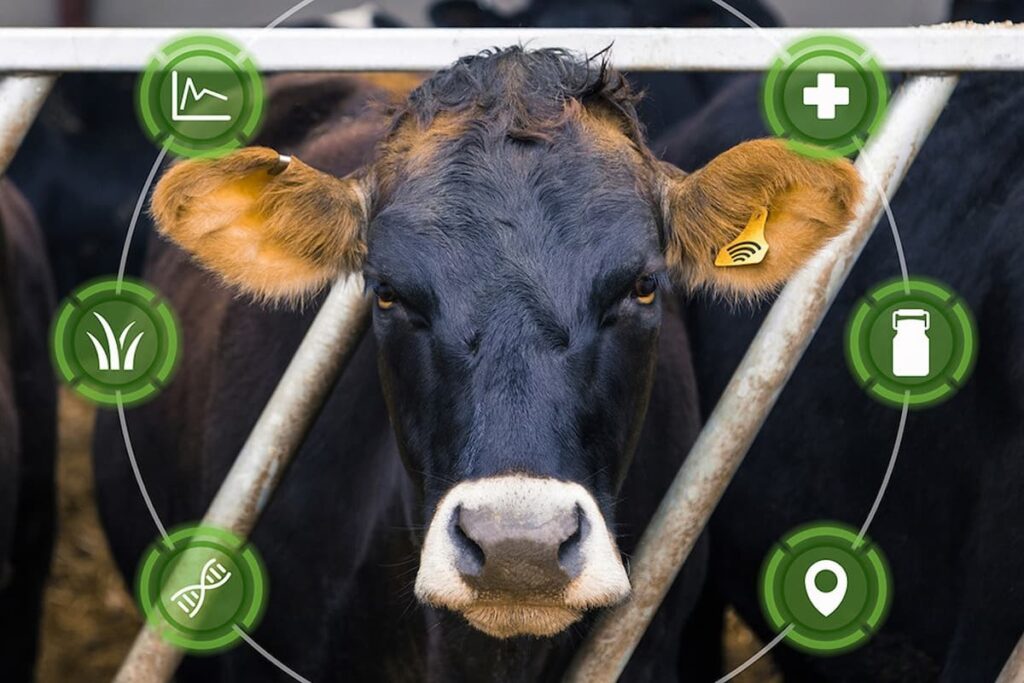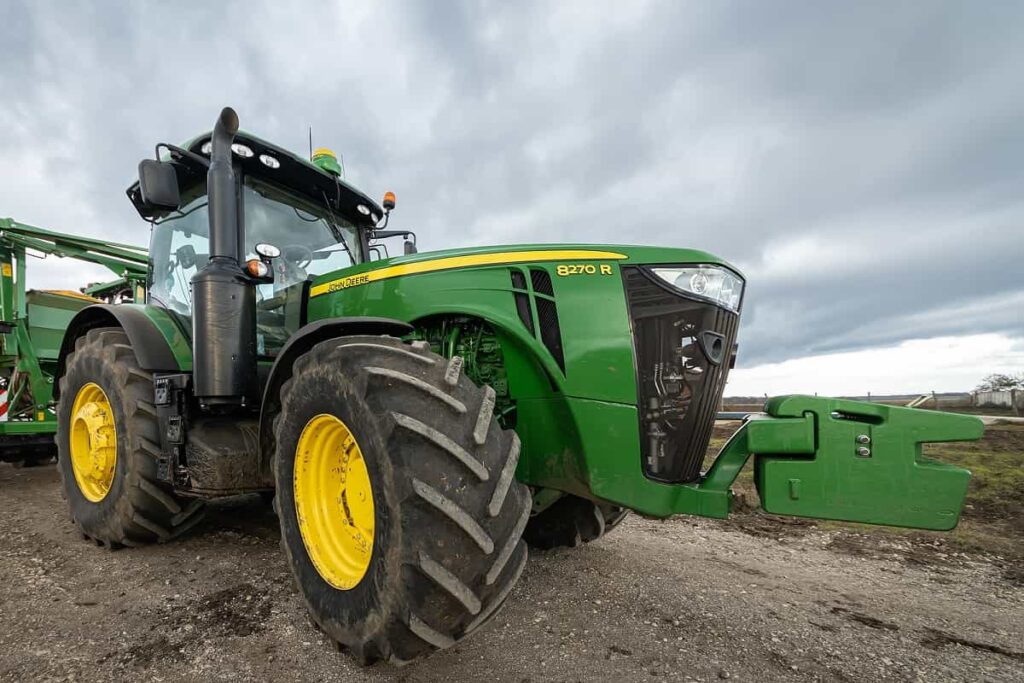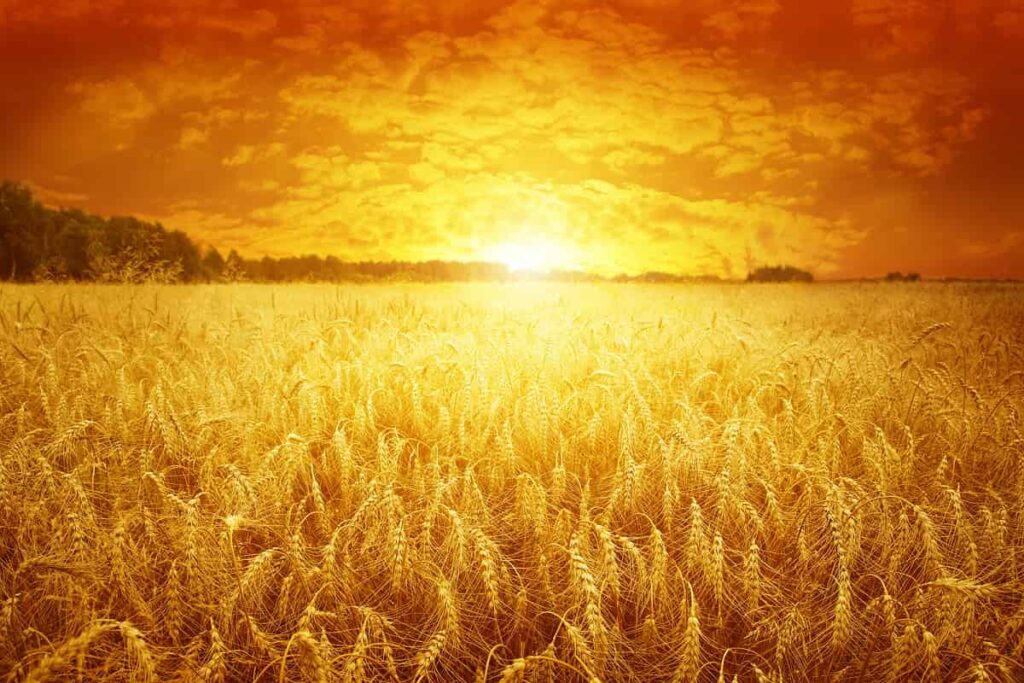9 New Technologies for Dairy Farming and Dairy Cows
Table of contents
Table of contents
- Improving Dairy Milk Quality
- Detecting Disease on Dairy Farms
- Diagnostic Machine for Counting Cells
- Sensor for Counting Cells
- Camera for Catching Mastitis
- Better Breeding Through Genetics
- Reducing Emissions from Dairy Farms
- Feeding Dairy Cows Better Food
- Developing New Kinds of Feed
- Analyzing Feed with a Handheld Spectrometer
- Finding the Right Bug for the Job
- Conclusion

The world is changing in scary ways. Artificial intelligence may take your high-paying, white-collar job. The robot wars are probably just around the corner. Once reliable stocks like Nvidia (NVDA) are in retreat. And people just aren’t drinking milk like they used to. This last point may seem trivial until you consider that total milk production in 2017 was worth about $38 billion in the United States alone, putting it in the top five agricultural commodities. More than nine million cows churned out about 215 billion pounds of milk that year. That’s great until you consider that people are drinking 40% less of it than they did in 1975, Bloomberg reported recently. Even Green Bay quarterback Aaron Rodgers eschews milk, which perhaps explains his exceptionally crappy play this season.

Even our low-paid MBAs recognize that too much supply with too little demand is bad for business. For example, Wisconsin has lost more than 600 dairy farms in the last year or so, with the number of herds at about half of where they were 15 years ago. There are many reasons for this decline. People are trying to eat better, even turning to AI for personalized health and diet decisions. There are concerns about the treatment of animals, especially the use of antibiotics that could lead to the next superbug epidemic. All of that has helped fuel the interest in synthetic biology startups creating fake foods like milk, eggs, and other animal-based products. And then there’s the little fact that dairy and meat production is about to become the leading producer of greenhouse gases.
If there was ever an industry in need of new technologies to become leaner and greener, it’s dairy farming. Below we highlight nine new technologies for dairy farming and dairy cows that might help turn things around.
Improving Dairy Milk Quality
Quality control is a key part of any business process, especially one where consumption of the product can lead to sickness and death. Founded in 2016, Canadian startup SomaDetect has raised about $2.4 million in disclosed funding. The company produces a sensor that attaches directly to the milking line. As milk passes through the sensor, a beam of light shoots out. The light hits small particles in the fluid that cause it to change direction and scatter. Measuring the different scatter levels reveals the components of the milk:

The company claims to use computer vision and deep neural networks to analyze the results, which can provide details on each cow’s health, reproductive status and the quality of milk produced based on factors like fat content. However, it still can’t detect which cows produce chocolate milk.
Detecting Disease on Dairy Farms
The sensor from SomaDetect can also ID the number of somatic cells in milk. These white blood cells increase in count as part of the animal’s immune response when a pathogen is present. The worst by far is one called mastitis, a highly contagious infection that can damage a cow’s udder and must be treated using antibiotics. Farmers used to have to run a culture, when results could take up to a week. But technology like that from SomaDetect and the following companies is winnowing that turnaround time down to hours, minutes, and even seconds.
Diagnostic Machine for Counting Cells
Founded in 2001, Advanced Animal Diagnostics has taken in nearly $42 million in disclosed funding, including most recently $3 million in debt financing. Previous investors included the venture arm of Swiss pharmaceutical giant Novartis (NVS). The North Carolina startup has invented the Qscout Farm Lab, a diagnostic machine that can identify mastitis before any symptoms occur. The instrument can churn out 20 tests per hour:

AAD says farmers can realize up to $240 in savings per animal by detecting infections quickly and earlier, as well as cut antibiotic use down by about half. The startup recently entered into an agreement with Zoetis (ZTS), reputedly the world’s largest producer of drugs for pets and livestock, to commercialize its tests platform outside the United States.
Sensor for Counting Cells

Camera for Catching Mastitis


The company says the system can detect the earliest stage of mastitis from two to four days before visible symptoms in the animal or milk occur. EIO Diagnostics certainly wouldn’t be the first company to use AI to diagnose medical scans.
Better Breeding Through Genetics
Of course, another way to circumvent the whole problem of mastitis is just to engineer cows that are naturally resistant to the disease. Minnesota startup Recombinetics, founded in 2008, isn’t promising to do that, but it is developing gene-editing technologies to breed livestock for other desirable traits through its subsidiary Acceligen. The company has raised nearly $61 million, taking in a respectable $34 million Series A in August 2018. It uses gene-editing tools like TALENs and CRISPR/Cas9 to essentially cut and paste the genetic code to make its
franken monsters genetically modified livestock. It has already modified a bull whose offspring were born without horns, to do away with the brutal practice of dehorning dairy cows so they don’t harm each other while crowded together in inhumane conditions.

Next up for Recombinetics: Heat-resistant dairy cows who won’t suffer in a warming world and puberty-free pigs who talk to spiders.
Reducing Emissions from Dairy Farms
Speaking of a hotter planet: AgFunder News reported just a few days ago about a company called California Bioenergy, founded in 2006, just got $90 million from the state of California to help dairy farms reduce livestock emissions. CalBio builds and installs equipment for what’s been called a “barn to biogas” solution. The closed-loop system takes waste from livestock and sends it into an anaerobic digester, where microorganisms break down the organic matter and create a biogas that is mostly methane. The methane is then destroyed by combusting it to generate renewable electricity or to power a truck, bus, or car.
Feeding Dairy Cows Better Food
Better health begins with what we put in our stomachs. That’s the philosophy behind the next three startups.
Developing New Kinds of Feed

Analyzing Feed with a Handheld Spectrometer

Finding the Right Bug for the Job
We’ve written before about the microbiome, which in this context, refers to the community of microorganisms that live in the gut. A number of companies are trying to decode our microbiome in order to treat disease. Ascus Biosciences out of San Diego has raised $12.5 million with the intent of decoding the microbiome within the bellies of livestock animals like dairy cows. The company is attempting to identify specific microbes and understand their roles, eventually hoping to find bacteria that would be particularly useful for developing products that would improve the health and performance of the animal. It’s not dissimilar to what agtech startup Indigo is doing for seed crops.
Update 05/28/2020: Ascus Biosciences has raised $46 million in Series B funding to continue expanding while serving their existing customers and to help fund their research and development pipeline. This brings the company’s total funding to $63.5 million to date.
Conclusion
Who knew so much was involved in getting milk out of a cow and into a plastic carton? And we haven’t even hit on robotics in dairy farming or all of the different solutions out there for livestock management, like an Indian company called Stellapps that monitors the entire cow supply chain through sensors. While the number of startups in the agtech sector seems to be growing exponentially, it remains unclear how quickly and easily a traditional industry like agriculture is embracing all of this newfangledness.
It’s interesting to note that many of the traditional big ag companies are getting onboard by either investing in these technologies directly or acquiring startups where appropriate. For instance, Zoetis has been on a bit of a buying spree of late, spending about $1 billion on four acquisitions over the last four years. Could Advanced Animal Diagnostics or one of its competitors make it No. 5? We’ll stay tuned.
Sign up to our newsletter to get more of our great research delivered straight to your inbox!
Nanalyze Weekly includes useful insights written by our team of underpaid MBAs, research on new disruptive technology stocks flying under the radar, and summaries of our recent research. Always 100% free.














